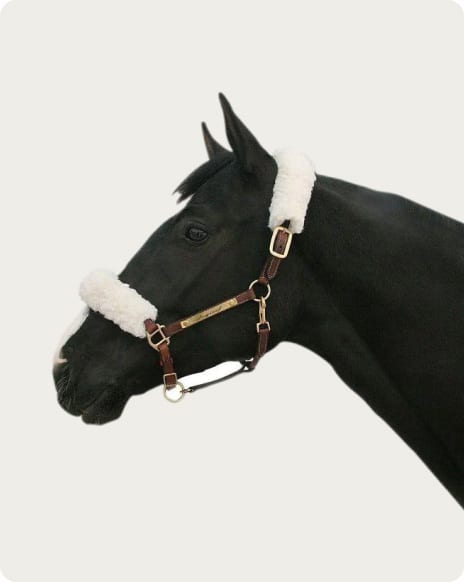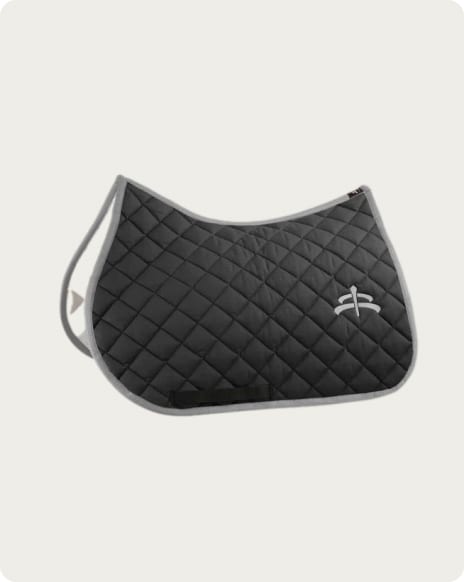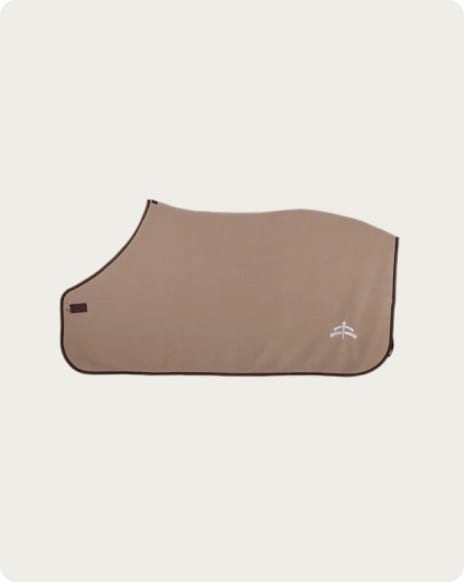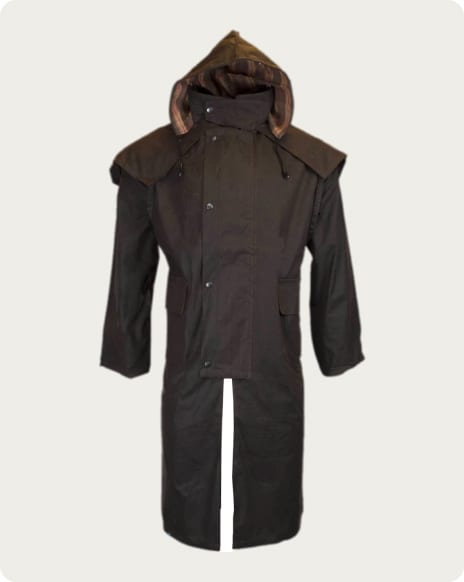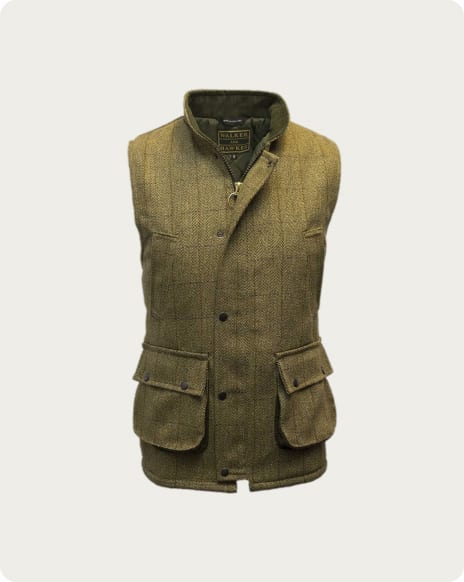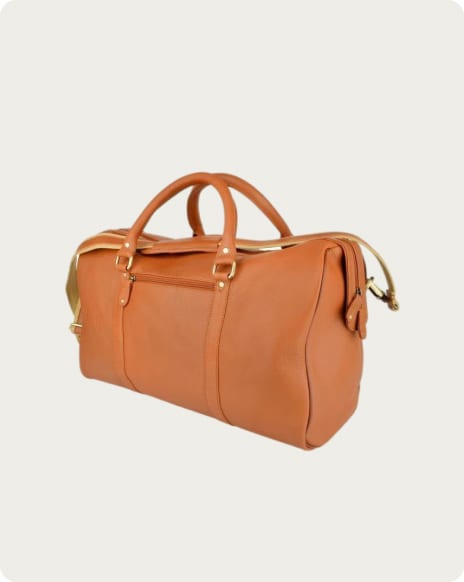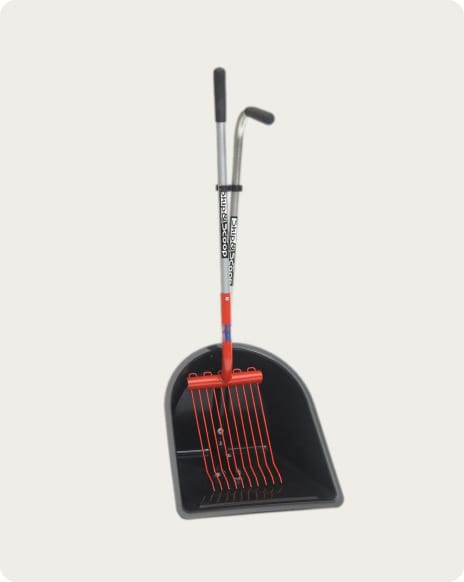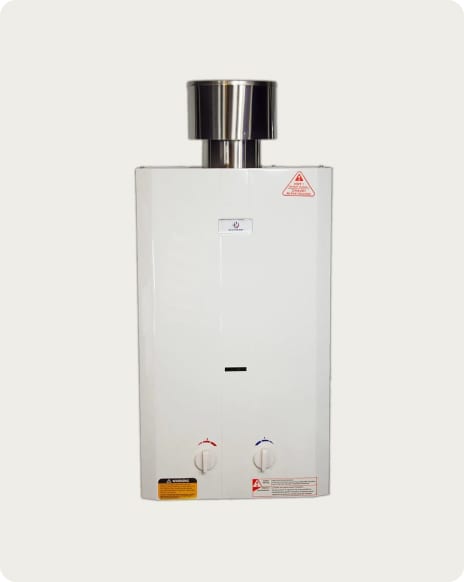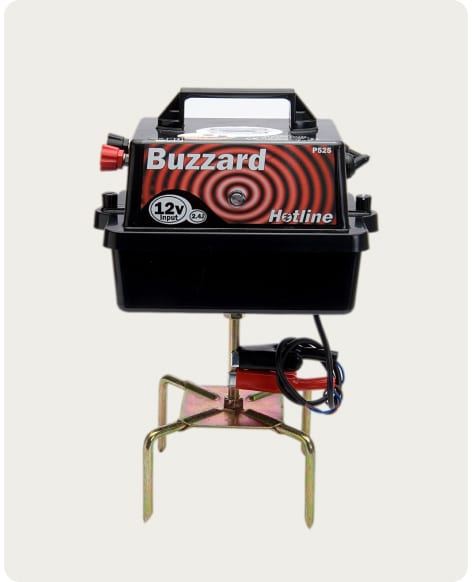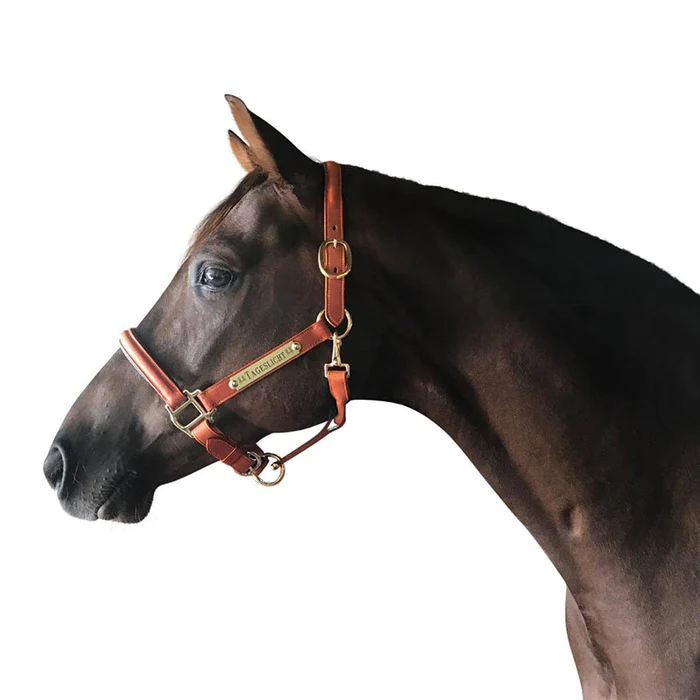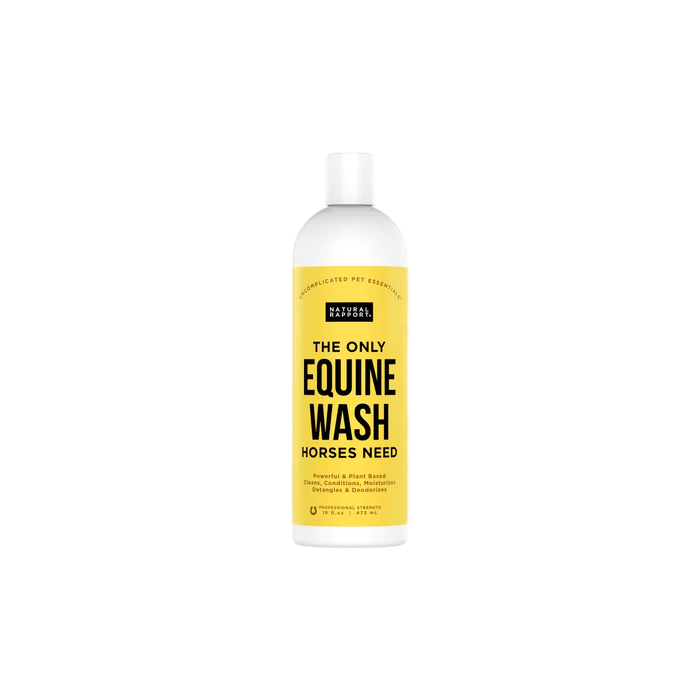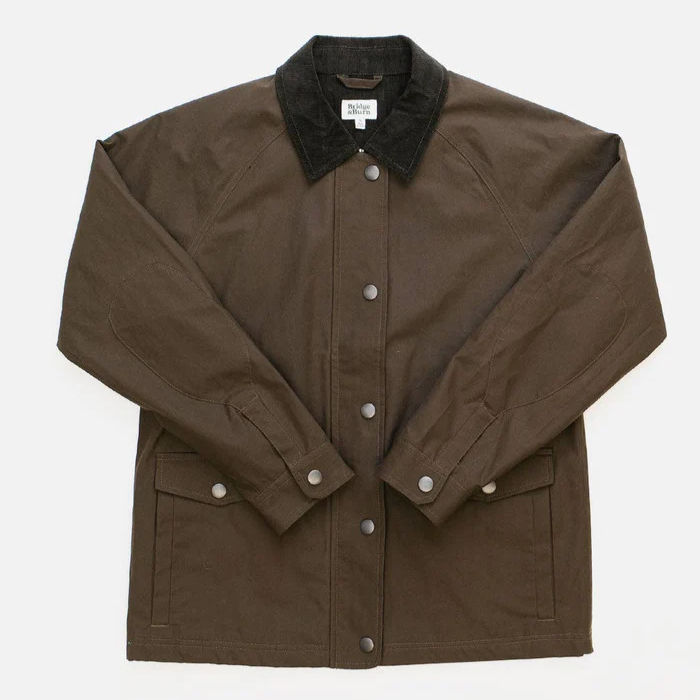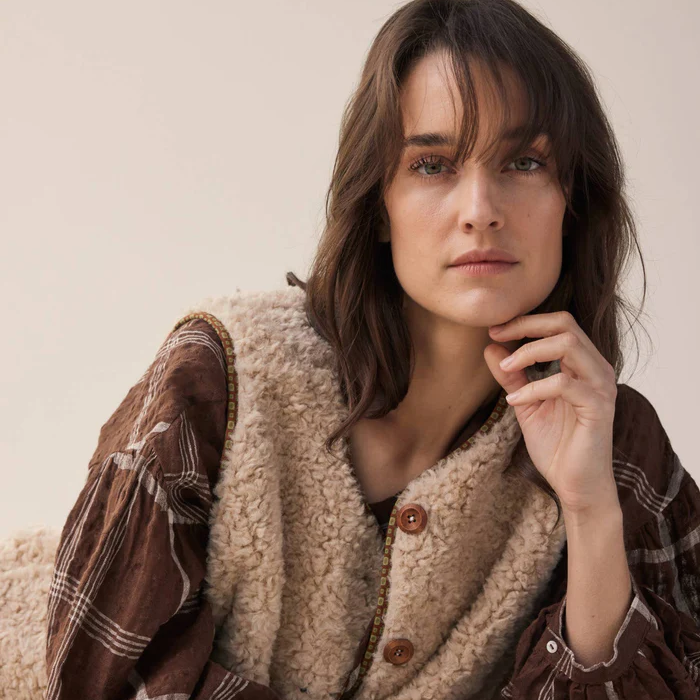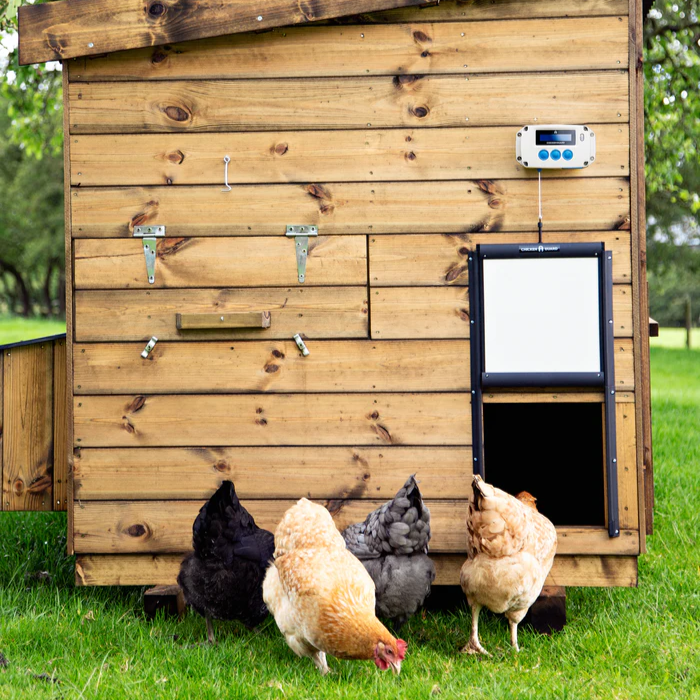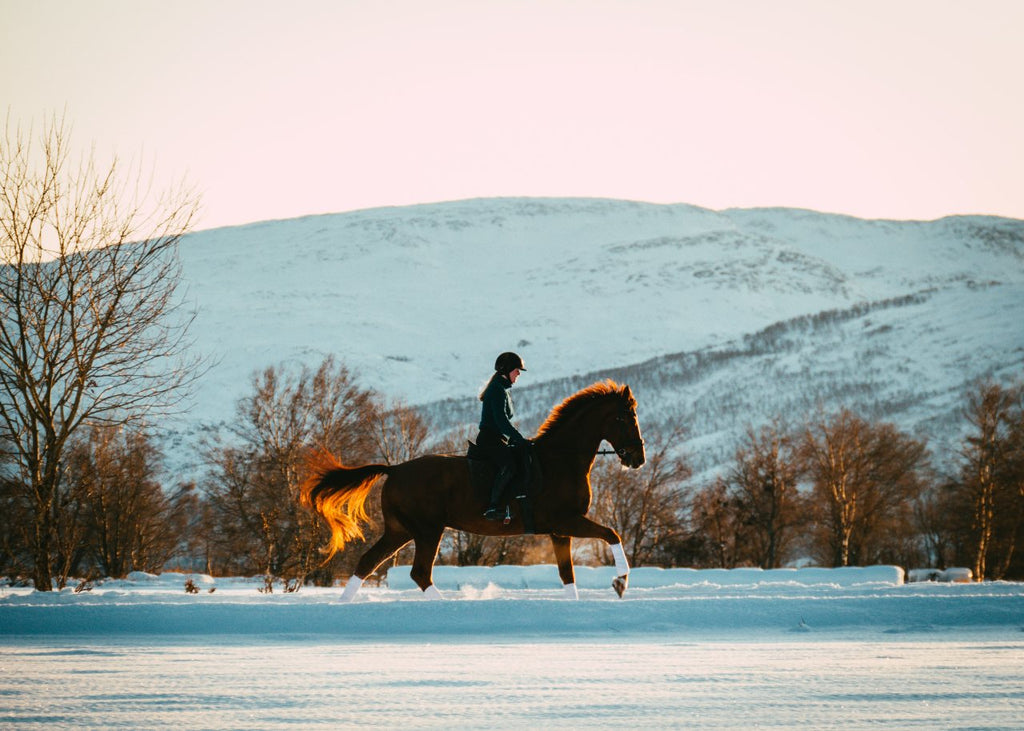
As temperatures fall and days grow shorter, horse people everywhere must protect their beloved companions from the cold. Whether your horse has a heated barn to retreat to or he’s living it up in a large pasture with a simple shelter, it’s probably time for a horse blanket.
First, you'll need to know how to measure a horse for a blanket to ensure a good fit. If the blanket is too large, it may rub, slip off, or even allow your horse’s legs to get tangled in the straps. If it's too small, it may cause chafing or fail to protect your horse from the elements.
You’re the expert in blanketing your horse in love, but if you’re not sure how to find the right horse blanket and measure your horse for a blanket, we’ve got you covered. We'll also answer some common questions and offer a few tips to help you find the perfect fit.
What Is a Horse Blanket?
Also known as a horse rug, a horse blanket provides your equine companion with a layer of protection. Not to be confused with saddle pads, horse blankets and horse sheets help protect your horse from uncomfortable weather in various climates. Winter blankets are the most common, but you’ll also see horses in turnout blankets and fly sheets, which protect against pests, rain, wind, and UV exposure.
Here are some of the many accessories and add-ons that horse blankets might come with:
- Hoods
- Liners
- Neck covers
- Belly straps/surcingles
- Extenders (for our big and tall friends)
- Shoulder guards/vests
- Mane-protector hoods
Some horse blankets offer better protection against cold weather or the sun, such as a fleece liner or an insulated hood. Others improve the fit or make it harder for more "motivated" horses to slip out of their blankets. Extras such as blanket soap (also known as a blanket wash) and storage bags help keep your horse blankets clean and in good condition.
Tip: Start with a quality blanket and add accessories like liners and vests later or as needed.
How to Measure a Horse for a Blanket

The equestrian lifestyle demands a lot of time, effort, and money. But it’s more than worth it to experience the joy of a sacred horse/human partnership. Still, you don't want to waste your money on a poorly-fitting blanket that either doesn't do its job or gets destroyed sooner than it should. A bad fit can also cause painful rubbing and chafing for your horse.
Whether you've been a horse lover for a week or a decade, learning how to measure a horse for a blanket will take you one step closer to meeting your companion’s every need.
To start, you'll need a horse, a helper, and the following supplies:
- Twine
- Pen
- Notepad (or a notepad app)
- Tape measure
Tip: If your hay bales use wire instead of twine, use a long piece of string or a soft measuring tape. If you run out of length with a soft measuring tape, measure in increments. This measurement system works for everything from foals and miniature horses to shires and other large breeds.
Step 1: Find a Good Spot
Bring your horse outside in the daylight, put a halter or collar on him, and find a quiet spot with level ground. Look for a place where your horse won't be distracted, spooked, or tempted by grass. Next, tie your horse securely with a standard quick-release knot.
Step 2: Measure the Horse
Tie a knot at one end of your twine or string to mark where your measurement will begin. Ask your helper to hold this knot at the center of your horse's chest. The center of the horse's chest is where the base of the neck meets the breast.
Run the length of the twine around one side of your horse, to the hindquarters and tail. Keep the twine parallel with the ground and use your pen to mark the twine where it rests on the center of the tail.
The twine should run from the center of the chest to the center of the tail, around the biggest parts of your horse's shoulders, stomach, and hindquarters.
Step 3: Measure the Twine
Lay the twine on a flat surface and measure the length from the knot to the mark you made at the center of the tail. Then, write the measurement of your horse in both inches and centimeters in your notepad. Recording both allows you to find a good fit whether a size chart uses the metric or imperial system.
Step 4: Finding Your Blanket Size
Now you're ready to find your horse's blanket size. Let's say you're considering this Back on Track® Winter Horse Blanket, which is available in sizes ranging from 125 cm to 165 cm. If your horse's measurement falls between two blanket sizes, round up. So, if your horse's measurement is 140 cm (or 55 inches), you would choose a 145 cm blanket.
Tip: Never round down, even if your horse is just 1 centimeter or a single inch over a smaller size. Always round up to the larger size to ensure your horse's blanket fits comfortably and doesn't pull or rub.
How Do You Know If You Have the Perfect Horse Blanket Fit?
A well-fitting horse blanket is like a dream come true. You should be able to easily slide your hand under the blanket around your horse’s neck and over the withers. Try this with your horse's head raised and in a grazing position.
If the horse blanket is too small, it’ll tug at the base of the neck and pull or rub the main, withers, and point of the shoulder. If it’s too big, it might hang to one side, rub your horse's shoulders, fall off your horse's head, or allow a leg to get caught (this one can be dangerous).
For blankets with belly surcingles or belly bands, you want the straps adjusted so you can slide one flat hand between your horse's belly and the strap. If the straps are too loose, they can result in tangled legs, and if they’re too tight they might rub or chafe your horse’s sensitive belly skin.
For blankets with tail and leg straps, adjust these so that you can fit one hand's width between the strap and your horse. Again, if the straps are too tight, they can cause chafing, and if they're too loose, they can get tangled.
When you step back and look at your horse, the blanket shouldn’t look tight or stretched over your horse's shoulders. It also shouldn’t look too large or appear to sag. The hem should hang above your horse's knees. The gussets at the shoulder should stretch only when your horse is in motion, and the straps should not be tight.
The Horse Blanket Debate

No horse blanket guide would be complete without mentioning the debate over whether or not horses need blankets at all. It’s a polarizing topic among equestrians.
On one hand, if your horse is a healthy weight with a thick winter coat and has access to good shelter, you might not need to blanket. On the other hand, if your horse hasn't grown a thick winter coat, is shaved with clippers, or is underweight, you'll almost certainly need one.
Of course, if your horse is shivering and visibly cold, he'll need a blanket regardless of his current coat or condition. And if he's drenched in sweat underneath a blanket when you remove it, he'll at least need a lighter blanket, if any.
There’s no universally agreed-upon answer on whether you should use horse blankets. The choice is a personal one. If you're not sure what to do, ask an expert who knows your horse and your climate — a veterinarian, trainer, or stable manager could be an excellent place to start. You might also ask your local saddlery store if they know what most horse people in your area choose.
Types of Horse Blankets
Finding the right horse blanket fit is just the beginning. You also need to decide what horse blankets you'll need so you can start building your horse's wardrobe. The two main types of horse blankets are turnout and stable blankets — this also extends to turnout sheets and stable sheets.
Whether you have a stable blanket or a turnout, let's touch on blanket weight. Warm horse blankets come in medium weight (150-250 grams of fill) and heavyweight (300+ grams of fill). More filling provides better insulation against the cold.
A horse sheet, also known as a "lightweight blanket" or "lite blanket," has 0-100 grams of fill. Horse sheets help with other horse care needs like UV protection rather than insulating against the cold.
Tip: When shopping for horse blankets and sheets, you'll notice the word "denier" or measurements like "1200D." Denier refers to the thickness of the individual threads used to make the fabric. The higher the denier, the thicker and more durable the material is. Look for higher denier (and ripstop fabric) for outdoor blankets, extreme weather, and destructive horses.
Turnout Blankets and Sheets
Turnout blankets and sheets are designed to be worn while your horse is outside. They're usually waterproof to protect your horse from the elements. Waterproof turnout blankets and sheets are safe for indoor use as well.
The exceptions to this rule include fly sheets, fly hoods, and fly masks. These replace or supplement fly repellent to prevent fly bites. They're breathable, thus allowing airflow, and they're considered essential horse tack in pest-prone areas. These sheets can also protect your horse from excessive UV exposure.
Turnout blankets usually have a denier of at least 1200, or 1200D, to protect against rips and tears.
Stable Blankets and Sheets
Stable blankets and sheets are designed for indoor use. They’re not waterproof and are not safe for outdoor use in rainy or cold weather. Unless specified in the product details, never assume a stable blanket or sheet is waterproof.
Stable blankets may have a denier around 400 or 600, often written as 400D or 600D.
Other Types of Blankets
Here are some other types of horse blankets:
- Coolers: A cooler helps wick away sweat so your horse can cool down while still keeping warm. Most coolers are placed on a horse after a tough ride and removed when the horse's coat is dry. Some can be worn while riding, attaching to the saddle.
- Blanket liners: A blanket liner adds an extra layer of warmth to horse turnout and stable blankets. You'll usually want one made to fit the exact blanket or brand your horse wears.
- High neck blankets: A high neck blanket, also known as a combo neck blanket, extends up your horse's neck. It might reach halfway or all the way up, providing additional coverage without the need for a hood paired with a standard neck blanket.
It's easy to get overwhelmed by numerous horse blanket choices, but most horses won't need them all. Instead, start with a blanket that meets your immediate needs (e.g., a heavyweight turnout blanket for winter weather) and go from there.
Horse Blanket Care Tips

Quality horse tack comes with a price tag, and horse blankets are no exception. Just as you have to maintain your headstalls, bridles, stirrups, girths, and other tack and stable supplies, you'll need to take good care of your horse blankets.
Follow these care tips to keep your blankets in good condition:
- Keep a blanket tote: It's good to have a tote for extra blanket supplies like buckles, blanket wash, spare surcingles, and repair kits. Add a pair of sturdy scissors in case the straps ever get dangerously tangled on your horse.
- Clean before you wash: Remove all excess hair and dirt from your blanket to prepare it for a washer. Then place it in a mesh bag to contain the straps, minimize tangling, and protect the washer.
- Be careful with the washer: Horse blankets do best with heavy-duty washers, as they can be too large and heavy for standard ones. Use cold water and blanket soap, and hang the blanket to dry. After washing, wipe down the inside of your washer and run a clean cycle before using it for clothes again.
A well-cared-for horse blanket will still need to stand up to whatever your horse does when you're not around. Rolling in the mud, rubbing on stall doors, chewing, and other horse antics are hard enough on your horse blankets, so do your best to keep them well maintained. Look for the highest-rated brands that you trust to last, even if it’s a bigger upfront investment, as this will save you money in the long run.
Tip: Invest in blanket maintenance items early and keep your blankets clean to prolong the life of your purchase.
Find the Perfect Horse Blanket
Now that you know how to measure a horse for a blanket, you're ready to shop. Picking horse wear can be as exciting as shopping for your own clothes. Make a list of what you need, keep your horse's measurements nearby, and have fun with it.
At Equestrian Co., our top-quality selection of horse blankets and sheets will make it easy to find the perfect fit. We guarantee our products with a standard 12-month warranty. And because we believe that all horse lovers deserve peace of mind, you can add an extended warranty at checkout for up to five years (60 months).



